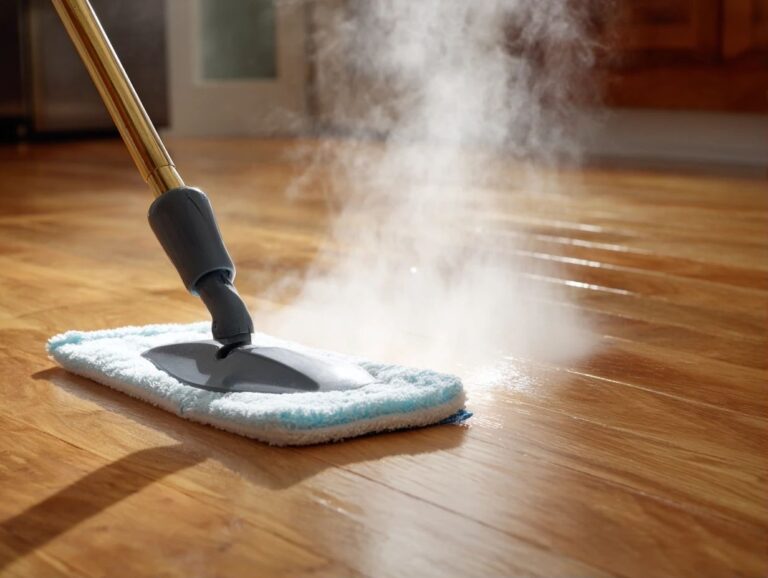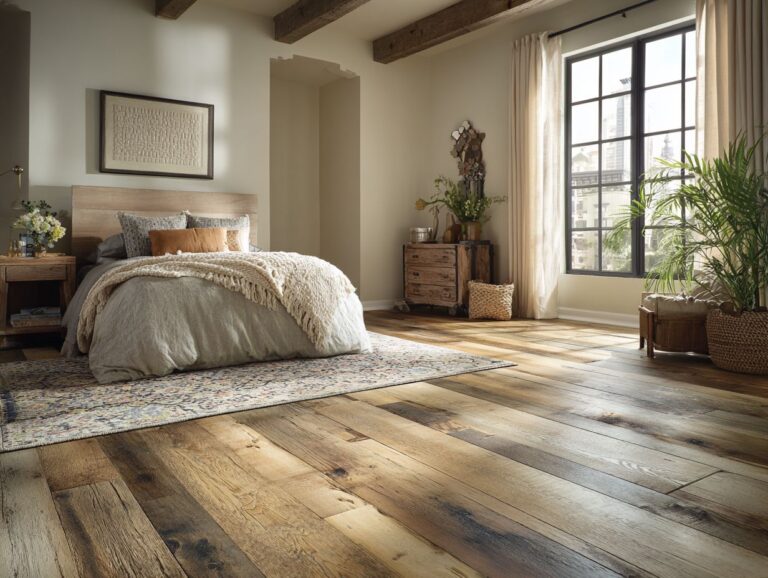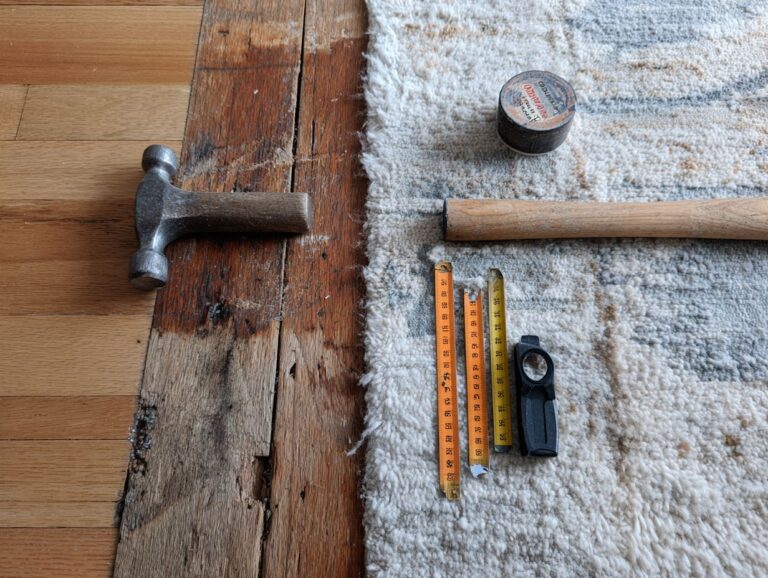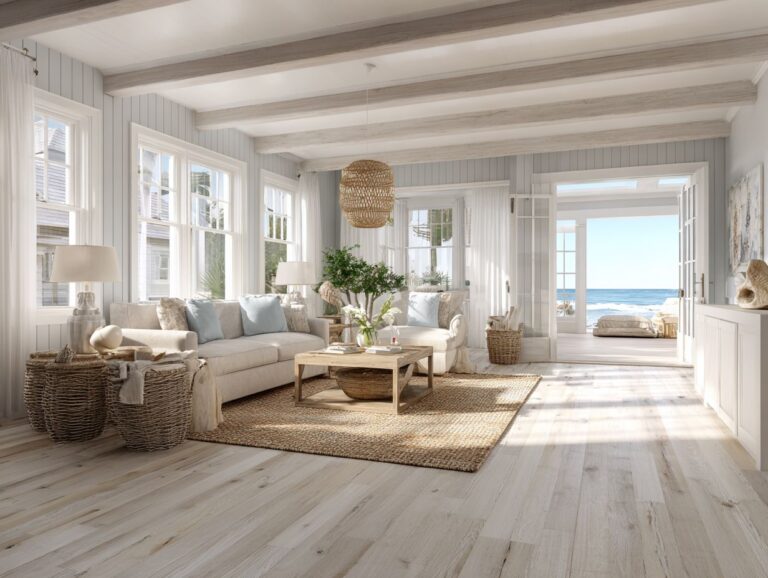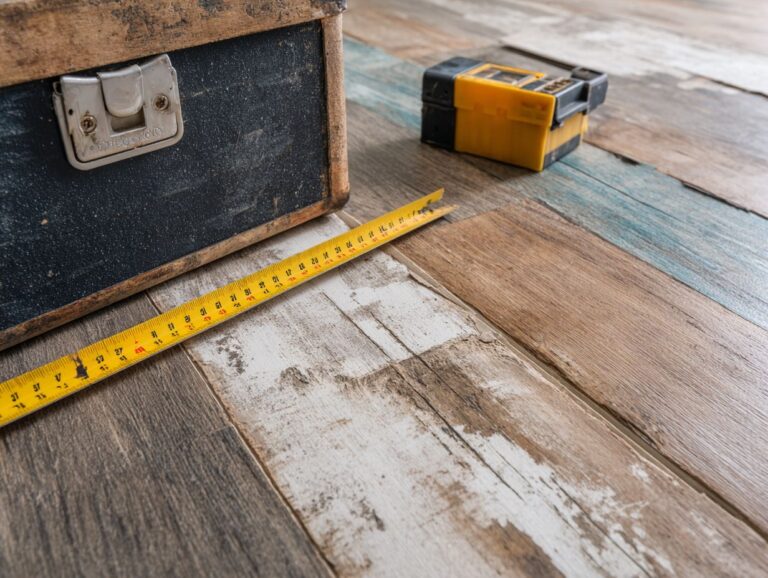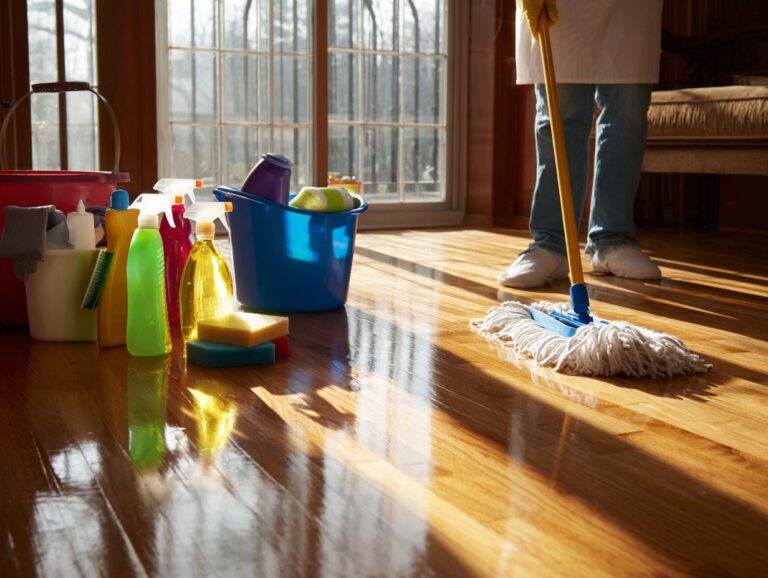Hygge-Inspired Flooring – Comfort First Design
Enjoy the cozy feeling with flooring that focuses on comfort and wellness. Hygge design, originating from Danish culture, creates a warm and inviting home atmosphere, as highlighted by the UN World Happiness Report. This article discusses how choosing the right flooring can improve your home, making it a cozy place. Learn useful advice and information to change your home into a cozy and welcoming space, embracing the essence of hygge.
Key Takeaways:
Contents
- Denmark Interior Laminate Market Analysis
- The Importance of Flooring in Hygge Design
- Types of Flooring for Hygge-Inspired Spaces
- Color Palettes for Hygge Flooring
- Textures That Enhance Comfort
- Maintenance of Hygge Flooring
- Incorporating Hygge Elements Beyond Flooring
- Frequently Asked Questions
- What is hygge-inspired flooring?
- How is hygge-inspired flooring different from traditional flooring?
- What types of flooring are considered hygge-inspired?
- Is hygge-inspired flooring suitable for all rooms in the house?
- Do I have to sacrifice style for comfort with hygge-inspired flooring?
- How can I add hygge-inspired flooring to my home?
Defining Hygge
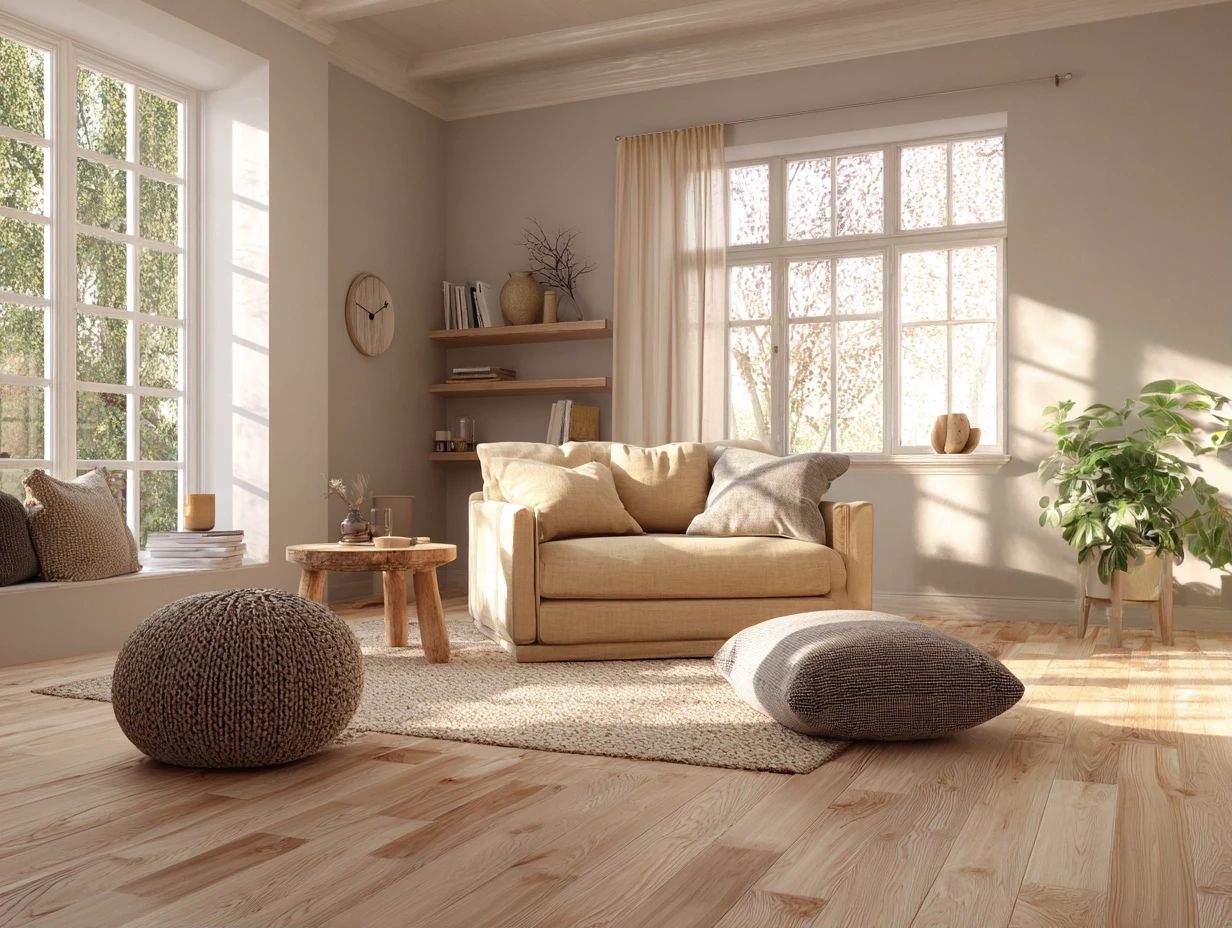
Hygge is defined as a quality of coziness that makes a person feel content and comfortable, often illustrated through decor and lifestyle choices.
To make your daily life more comfortable and inviting, start by including items such as knitted blankets, soft materials, and warm lighting.
Consider creating a dedicated space with comfortable seating where you can unwind with a good book. Create a relaxing environment using scented candles or essential oils.
Engage in simple pleasures, like brewing a pot of tea and enjoying it with close friends. These small changes can make your surroundings more comfortable, leading to a greater feeling of happiness.
Origins of Hygge in Danish Culture
Originating in 18th-century Denmark, hygge reflects a cultural emphasis on communal gatherings and creating warm, inviting spaces, as highlighted by the UN World Happiness Report.
This concept prioritizes togetherness and well-being, linking social connections to happiness. Meetings around fires or shared meals in the past displayed hygge’s social roots, building strong ties between family and friends.
Practices such as candlelight dinners, cozy blankets, and homemade pastries exemplify hygge in contemporary settings, reinforcing its importance in daily life. The Danes build spaces that help people connect, leading to happiness, which is important for success in both personal and community life.
Accepting this way of thinking can greatly improve social connections and a sense of community.
Denmark Interior Laminate Market Analysis
Denmark Interior Laminate Market Analysis
Market Growth and Trends: Market Valuation
Market Growth and Trends: Growth Rates and Trends
Market Growth and Trends: Sustainability
The Denmark Interior Laminate Market Analysis gives a detailed summary of the market’s present condition, expected expansion, and new developments, especially related to sustainability. This data helps stakeholders understand how the market works so they can make informed decisions.
Market Growth and Trends This section provides useful information about different parts of the interior laminate market:
- Market Valuation: The market value in 2022 was estimated at $7.3 billion. This substantial figure indicates a strong demand for interior laminates in Denmark. In addition, predictions for 2030 suggest the market will grow significantly, with an expected size of $10.5 billion. This growth path shows the market’s strength and potential for growth over the next ten years.
- Growth Rates and Trends: The market is predicted to grow at a compound annual growth rate (CAGR) of 4.8% from 2024 to 2030. The yearly growth in laminated panels is reported at 12%. These metrics indicate a healthy growth rate, driven by innovation, increased construction activities, and consumer preference for durable, aesthetically pleasing interior materials.
- Sustainability: A significant aspect of the market is its shift towards sustainability. 78% of new buildings are projected to be eco-friendly, reflecting a strong trend towards green construction practices. Furthermore, there is a 34% annual growth in market research related to sustainable practices. This trend highlights the need for eco-friendly materials and methods in the industry, matching worldwide efforts to lessen harm to the environment.
The analysis of the Denmark interior laminate market indicates a positive outlook with substantial growth projections. Focusing on sustainable and environmentally friendly buildings is a key element that will likely promote new ideas and need in the market. Stakeholders, such as manufacturers and investors, can use this information to plan and take advantage of market opportunities.
The Importance of Flooring in Hygge Design
Flooring is important in hygge design, affecting both the look and the comfort of living areas. For those interested in sustainable choices that align with hygge’s natural aesthetic, exploring eco-friendly flooring trends can be beneficial.
How Flooring Affects Comfort
The choice of flooring directly impacts comfort; soft surfaces like carpets create warmth, while natural materials like wood evoke tranquility.
Consider oak flooring: its grain and finish provide a cozy feel, retaining warmth in cooler months. In contrast, tile floors offer a sleek, modern aesthetic, but can be chilly underfoot, especially in winter.
For maximum comfort, consider using cork, which offers warmth and a natural cushion. Area rugs can make hard floors softer to walk on, making your home feel cozier.
Thus, your flooring choice should align with both your comfort preferences and the climate of your living space.
Creating a Cozy Atmosphere
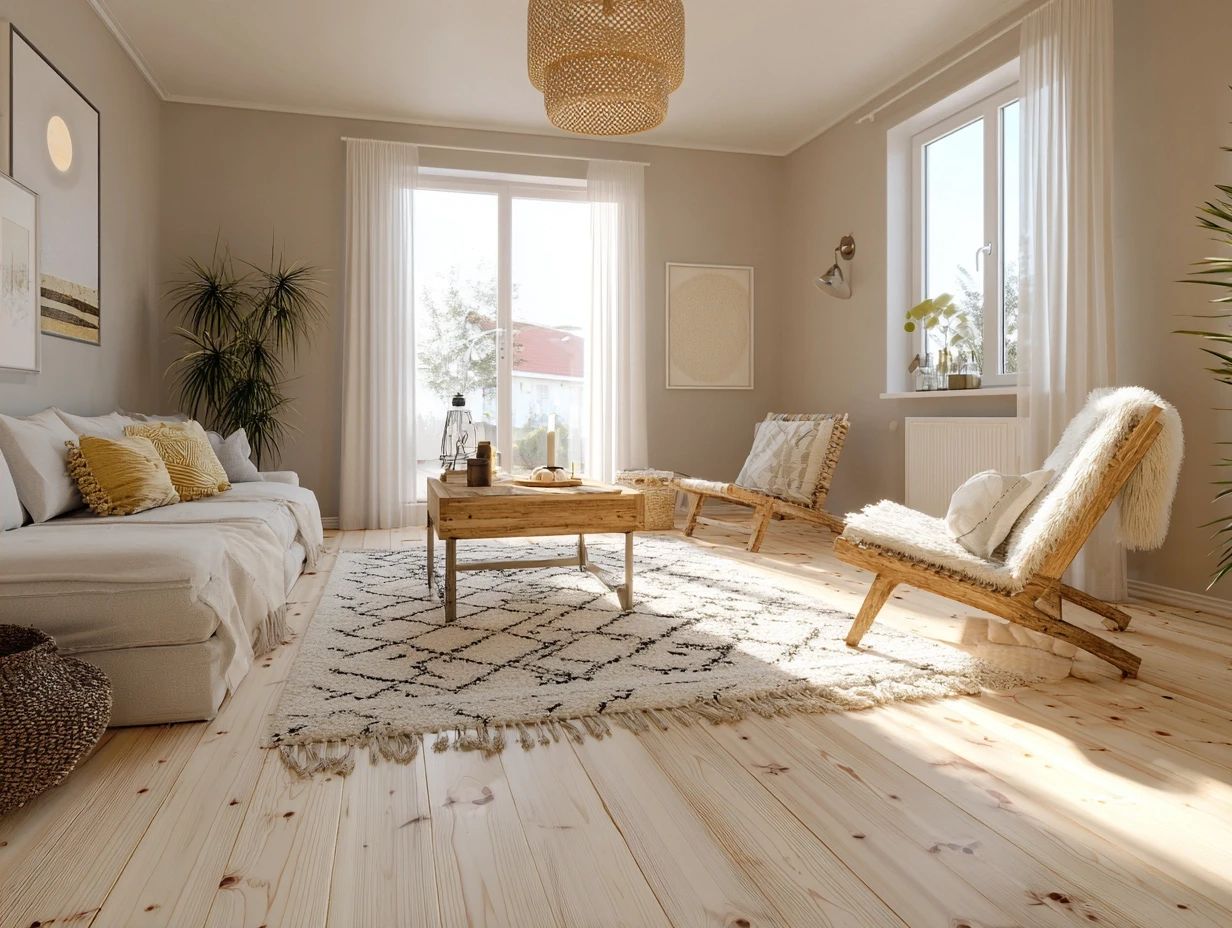
To create a cozy atmosphere, combining the right flooring with inviting textures and warm lighting is essential.
Start with a soft, plush area rug over hardwood floors to add warmth and comfort underfoot. Layering different textures, such as a jute rug beneath a softer wool one, can create depth and visual interest. For an extensive analysis of this trend, our comprehensive study on retro flooring comebacks examines how vintage styles are making a return, adding both character and charm.
Adding vintage items, such as an old side table or framed family photos, will make the space feel more welcoming. Using soft, dimmable lighting fixtures can adjust the mood; consider warm-toned LED bulbs for a gentle glow.
This mix of items turns a room into a comfortable space, ideal for unwinding.
Types of Flooring for Hygge-Inspired Spaces
Picking the right flooring is important for creating a cozy atmosphere. There are many choices to match different preferences and styles.
Wood Flooring
Wood flooring, particularly oak, is a favored choice in hygge design for its warmth, durability, and natural beauty.
For a great finish, consider using products like Bona Mega or Rubio Monocoat, which highlight the wood’s grain and offer durable protection.
Keeping your floors clean is simple: just vacuum them regularly and mop them now and then with a mild cleaner to keep them spotless.
The Borealis collection by Panaria offers a range of finishes and textures, perfect for achieving a cozy ambiance.
Opting for a matte finish can also add an element of sophistication while being more forgiving in terms of visible scratches.
Carpet and Area Rugs
Carpets and area rugs add softness and warmth, essential for creating cozy, inviting living spaces that embody hygge principles.
To maximize comfort and aesthetics, position larger area rugs under furniture to create a cohesive look, while using smaller rugs to define separate zones in an open space.
Using different textures can add warmth; for example, combine a soft shag rug with a flat-weave rug to create visual appeal.
Consider color schemes that complement your decor-warm tones like deep reds or earthy browns can evoke coziness.
For maintenance, use carpet protectors to extend the life of your rugs, ensuring they remain a lasting element in your home.
Natural Stone and Tile
Natural stone and tile provide a rustic touch while also offering a unique aesthetic that aligns with the hygge ethos when paired thoughtfully.
To easily add natural stone or tile flooring to your hygge design, choose warm colors like beige, taupe, or soft greys.
Textures matter too; consider stone with a rougher finish or tiles that mimic the feel of aged wood. Adding soft area rugs can make a space more comfortable and warm.
Underfloor heating turns cold tile floors into warm ones, making your space feel cozy. Complement the flooring with plush furnishings and soft lighting to truly embody the hygge spirit.
Color Palettes for Hygge Flooring
Color palettes play a big role in setting the mood of hygge-inspired spaces, helping select flooring and decoration.
Warm Neutrals
Warm neutrals create a serene environment, promoting relaxation and comfort in hygge design.
To effectively use warm neutral tones in flooring, consider choosing shades like beige, taupe, or soft greys. For example, a beige hardwood floor can harmonize beautifully with walls in a muted ivory shade, creating a cohesive look.
Complement these tones with decor elements such as:
- Terracotta pots
- Natural fiber rugs
- Light wooden furniture
to enhance the calming atmosphere. Adding soft textiles, like a plush cream sofa or light brown cushions, can increase comfort while keeping the calm color scheme, creating an inviting and peaceful space.
Soft Earth Tones
Soft earth tones make rooms feel warm and inviting with their comforting textures and colors.
Adding these colors to flooring can improve comfort and style. Options like warm beige or soft taupe hardwood floors provide a solid foundation, while cork flooring offers a sustainable, cozy alternative.
Pair these with area rugs in muted ochre or moss green to add depth and softness underfoot. For a modern touch, consider combining rich wood with stone tiles in sandy hues, creating a seamless flow between rooms.
Using these materials highlights the natural colors and creates a calm and welcoming atmosphere in your home.
Textures That Enhance Comfort
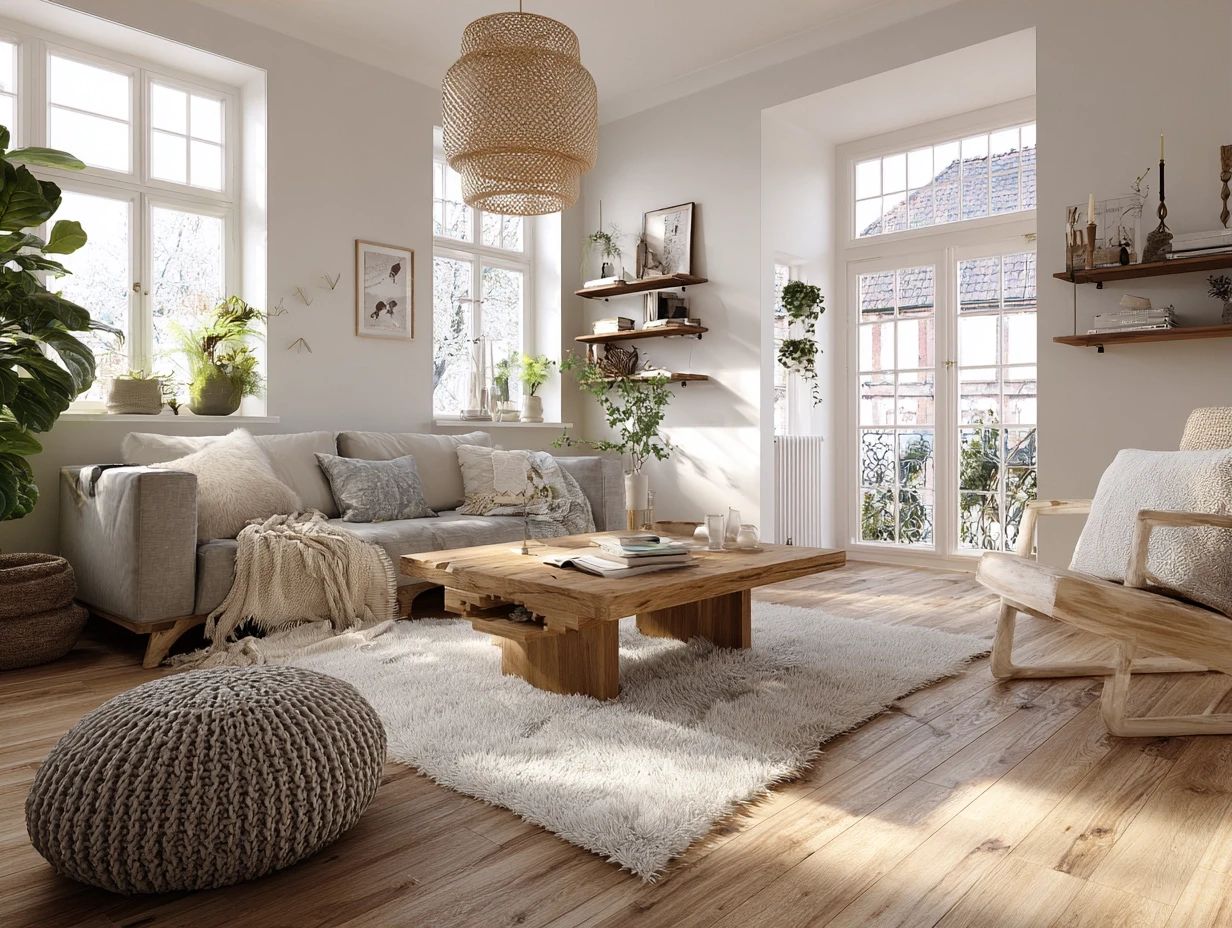
Textures matter for increasing comfort and are essential for making living spaces feel cozy.
Soft vs. Hard Surfaces
Knowing how to mix soft and hard surfaces creates a cozy and comfortable atmosphere in hygge design.
Soft surfaces, like plush carpets and cozy rugs, create a sense of warmth and intimacy, encouraging relaxation. They reduce noise, creating a calmer and more welcoming environment.
In contrast, hard surfaces such as hardwood or tile offer durability and a sleek aesthetic, contributing a sense of clean lines and spaciousness.
To improve the feeling of coziness, try using different textures; for example, lay a soft area rug on top of a wooden floor. This mix gives the room a cozy look and offers a comfortable place to walk, capturing the feel of hygge.
Layering Textures with Rugs
Using multiple rugs and textiles adds visual appeal and comfort, which are key for creating a cozy hygge atmosphere.
To effectively layer rugs, start with a large, neutral base rug-think jute or sisal.
Then, place a smaller, patterned rug on top, like a bright kilim or Persian style, to create a striking difference.
Consider the color palette: a warm-toned base pairs nicely with cool accent colors in the top rug.
For textiles, mix textures by incorporating chunky knit throws with smooth cotton or linen cushions.
This interaction brings a deeper feeling and warmth, completing your hygge area nicely.
Maintenance of Hygge Flooring
Looking after your floors is key to maintaining a warm and inviting appearance in your home for years.
Cleaning Strategies
Developing effective cleaning strategies helps maintain the aesthetics and comfort of hygge flooring over time.
For hardwood floors, use a mixture of vinegar and water for a gentle clean, paired with a microfiber mop to avoid excess moisture.
To clean tiles, use baking soda mixed with lemon juice. These natural cleaners work well to remove dirt and are safe for the environment.
Carpet cleaning is simple with a vacuum and some baking soda to make it smell good.
Select products that decompose naturally and are free from harsh chemicals to align with the hygge concept, which focuses on creating a cozy and healthy home environment.
Longevity Tips
Using long-lasting techniques for your flooring helps keep your cozy spaces comfortable and looking good for a long time.
To protect your floors, invest in high-quality area rugs, particularly in high-traffic zones. Choose rugs with non-slip backing to prevent accidents and reduce wear.
Set up a routine to clean by sweeping or vacuuming weekly to prevent dirt accumulation. Schedule a detailed cleaning by professionals twice a year.
Apply floor protectors under furniture legs to prevent scratches. Following these actions will improve the appearance and increase the lifespan of your flooring.
Incorporating Hygge Elements Beyond Flooring
Adding hygge elements like furniture and lighting can greatly improve the cozy atmosphere of your home.
Furniture Choices
Picking the right furniture can improve the cozy feeling by focusing on comfort, practical use, and warmth.
To create a truly hygge atmosphere, consider incorporating soft textiles like a plush, oversized sofa paired with cozy, knitted throw blankets.
Include a small coffee table made from recycled wood to improve both the look and use of the space. Incorporating a few floor cushions provides additional seating and encourages relaxation.
Don’t forget to include ambient lighting; warm, dimmable lamps can create a calming atmosphere.
By selecting furniture that invites comfort while serving practical purposes, you create a space that embodies the essence of hygge.
Lighting for a Cozy Ambiance
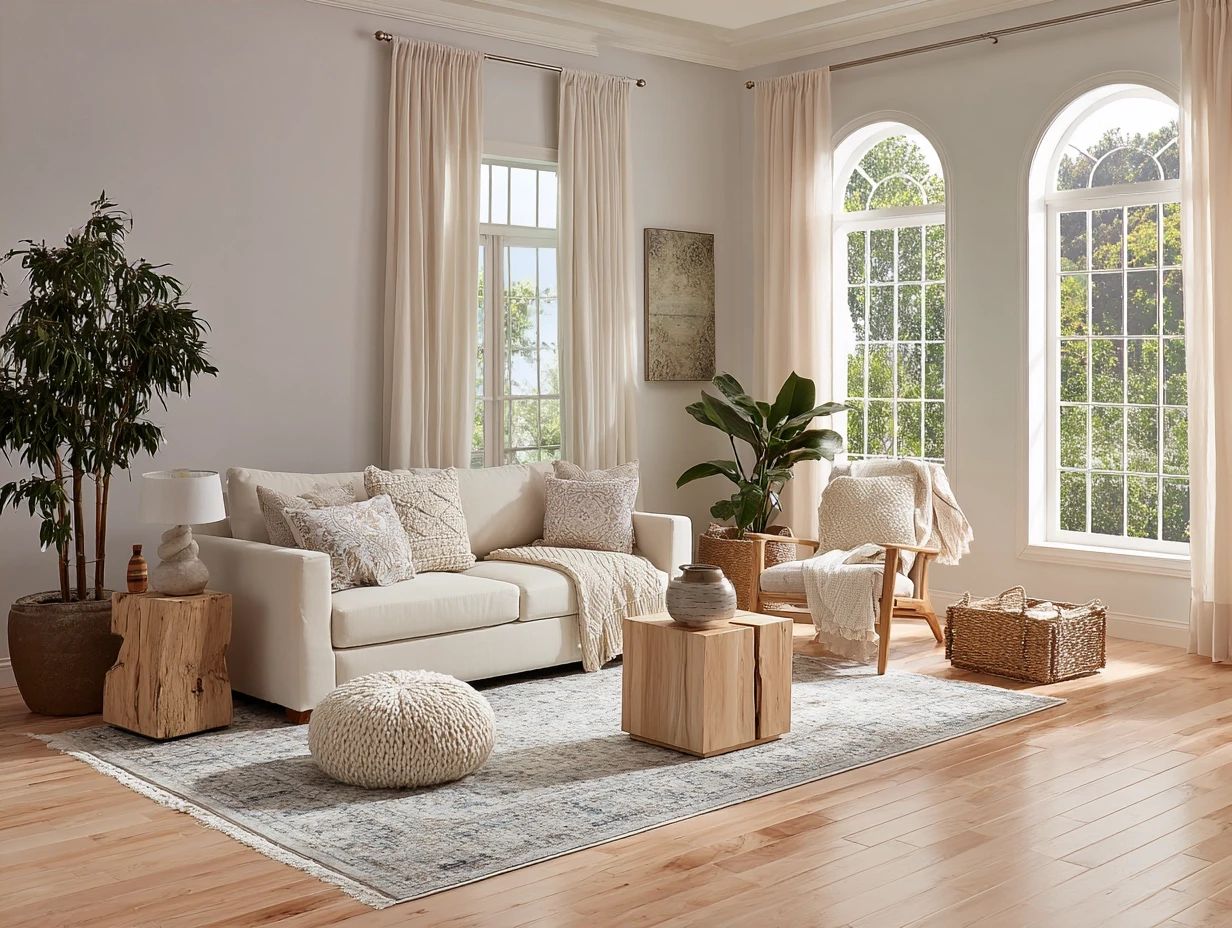
Lighting is important for creating a comfortable atmosphere. You can use candles or lamps with an old-fashioned look.
To create a cozy atmosphere, think about using warm-colored LED bulbs in gentle lighting setups-such as Edison-style lamps or fairy lights hung around furniture.
Philips Hue bulbs allow you to adjust the light level and color from anywhere, letting you create the atmosphere you desire.
Using multiple light sources at varying heights, like floor lamps beside a plush armchair and soft table lamps on side tables, can add depth and comfort to the space.
Using candles in strong ceramic holders adds warmth and creates a gentle flicker that makes the space feel more inviting.
Final Thoughts on Hygge Flooring
The right flooring choices are fundamental to achieving a true hygge atmosphere, blending comfort and aesthetic appeal effortlessly.
To give your home a cozy atmosphere, think about flooring choices that focus on warmth and texture.
Wood floors, for instance, create a timeless charm and can be accented with cozy area rugs. If you’re looking for a softer touch, cork flooring is eco-friendly and exceptionally warm underfoot. For extra comfort, heated tiles in kitchens or bathrooms can make it more pleasant during chilly months.
Remember, using layered textiles and natural materials with your flooring choices can improve the atmosphere, creating a relaxing and welcoming environment in your living space.
Encouragement to Look Into What Makes You Feel Comfortable
Each person has their own sense of comfort, and adding personal touches can make your hygge-themed space much better.
To create a warm and welcoming space, use soft materials like comfortable throws and cushions that encourage relaxation.
Consider using warm lighting-think fairy lights or dimmable lamps-to create a cozy glow that soothes the senses.
Adding personal mementos, like family photos or souvenirs from travels, can also make your space feel uniquely yours.
Bring in natural elements, such as plants or wooden decor, to promote a sense of tranquility and connection with nature.
These changes can turn your home into a peaceful place that supports comfort and health.
Frequently Asked Questions
What is hygge-inspired flooring?
Hygge-inspired flooring means choosing designs that focus on comfort and warmth. It takes inspiration from the Danish concept of “hygge”, which is all about creating a warm and inviting atmosphere in the home.
How is hygge-inspired flooring different from traditional flooring?
Unlike traditional flooring, which may focus on aesthetics or durability, hygge-inspired flooring puts comfort as the top priority. This can include softer textures, warmer tones, and more natural materials.
What types of flooring are considered hygge-inspired?
Hygge-inspired flooring can include a variety of options such as plush carpets, soft area rugs, and even cork or natural wood floors. The key is to choose materials that create a sense of warmth and coziness in the space.
Is hygge-inspired flooring suitable for all rooms in the house?
Yes, hygge-inspired flooring can be used in all rooms of the house, from the bedroom to the living room to the kitchen. It’s all about creating a comfortable and inviting atmosphere, no matter the function of the space.
Do I have to sacrifice style for comfort with hygge-inspired flooring?
No, you don’t have to sacrifice style for comfort. Many hygge-inspired flooring options can also be aesthetically pleasing and fit with a variety of design styles. It’s all about finding the right balance between comfort and style.
How can I add hygge-inspired flooring to my home?
You can bring hygge-inspired flooring into your home by selecting soft, cozy materials, using warm and inviting colors, and adding layers of texture with rugs and other accessories. It’s all about creating a comfortable and welcoming space for you and your family.
